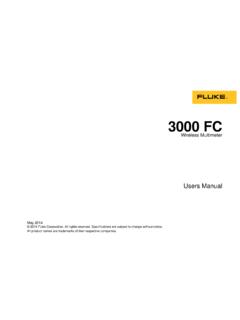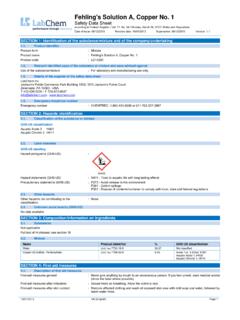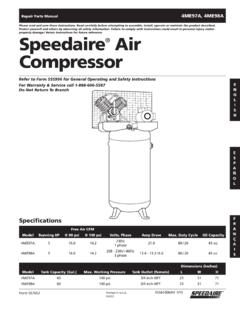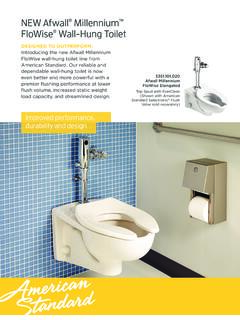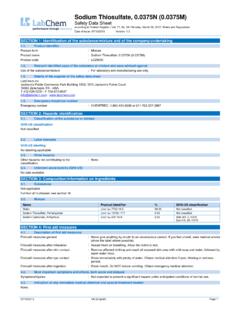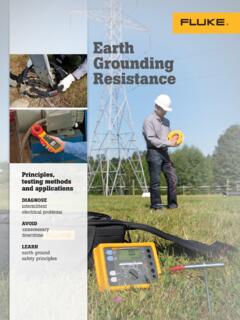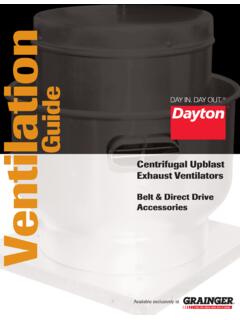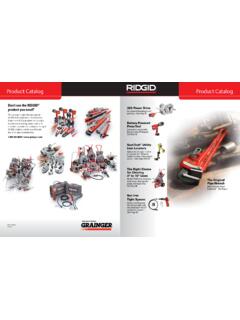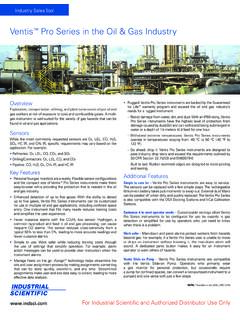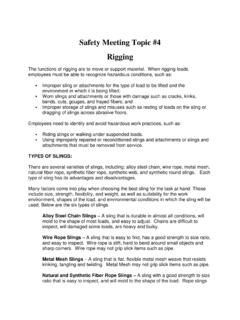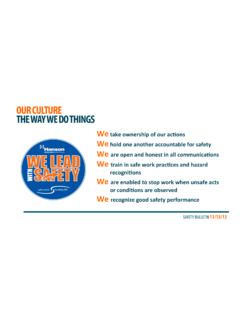Transcription of Web Sling Safety Bulletin Rev 311 - grainger.com
1 Copyright 2011 by Lift-All Co., Inc. Copyright 2011 by Lift-All Co., Inc. 1. Sling users must be trained in operating practices, including Sling selection, use, inspection, rigging practices, cautions to personnel, and effects of environment. 2. Inspect Sling at least daily and remove from service if damaged. 3. Protect Sling from being cut or damaged by corners, protrusions, or from contact with edges that are not well rounded. 4. Use Sling properly - Do not exceed a Sling s rated capacities and always consider how the Sling angle affects the amount of tension on the Sling (See Table 4-1).
2 5. Stand clear of load. Do not stand on, under or near a load, and be alert to dangers from falling and moving loads, and the potential for snagging. 6. Maintain and store Sling properly. Sling should be protected from mechanical, chemical and environmental damage. 1. Sling Users Must be Trained and Knowledgeable Sling users must be knowledgeable about the safe and proper use of slings and be aware of their responsibilities as outlined in all applicable standards and regulations. ASME states: "Synthetic web Sling users shall be trained in the selection, inspection, cautions to personnel, effects of the environment and rigging practices.
3 " OSHA Sling Regulation 29 CFR states that a qualified person is one: "who, by possession of a recognized degree or certificate of professional standing in an applicable field, or who, by extensive knowledge, training, and experience, has successfully demonstrated the ability to solve or resolve problems relating to the subject matter and work." If you are unsure whether you are properly trained and knowledgeable, or if you are unsure of what the standards and regulations require of you, ask your employer for information and/or training DO NOT use web slings if you are unsure of what you are doing.
4 Lack of skill, knowledge or care can result in severe INJURY or DEATH to you and others. 2. Inspect Sling for Damage Damage to a web Sling can significantly reduce its capacity to hold or lift loads and increases the chance that the Sling will fail during use. If you are not sure if a Sling is damaged, DO NOTUSE How to inspect slings Perform a visual inspection of the entire Sling and feel along its entire length for any of the types of conditions listed in Tables 2-1 and Removal from service Remove Sling from service immediately if ANY of the listed types of damage are detected, even if the damage is not as extensive as the relatively extreme examples illustrated in Table 2-2.
5 Never ignore Sling damage or attempt to perform temporary repairs of damaged slings ( , tie knots in the Sling , etc.). Table 2-1. Removal from service criteria: Holes, tears, cuts, snags or embedded materials Excessive abrasive wear Exposed red core warning yarn if provided Broken or worn stitches in the load bearing splices Identification tag is missing or not readable Sling has been tied into one or more knots Signs of ultraviolet (UV) light degradation Any heat or chemical damage, acid or alkali burns, melting or weld spatter Fittings with any cracks, excessive wear, or other damage, such as deformation, corrosion, or pitting Hooks with throat opened more than 15% or twisted more than 10 degrees out of plane Any conditions which cause doubt as to the strength of the Sling Synthetic Web Sling Safety Bulletin Failure to Read.
6 Understand and Follow the information in this Bulletin may result in severe INJURY or DEATH due to Sling failure and/or loss of load. This Bulletin contains important Safety information. It DOES NOT contain all of the information you need to know about handling, lifting and manipulating materials and loads safely. It is your responsibility to consider all risk factors prior to using any rigging device or of Choke When a choke hitch is used, and the angle of choke is less than 120 degrees, the Sling choker hitch capacity decreases.
7 To determine the actual Sling capacity at a given angle of choke, multiply the Sling capacity rating (for a choker hitch) by the appropriate reduction factor determined from Table 4-2. Figure 4-3 Adjusted choker hitch capacity = Choker Hitch Capacity x Reduction Factor Table 4-2. Reduction in rated capacity as a function of angle of choke 4c. Sling hardware and connectionsConnection surfaces must be smooth to avoid abrading or cutting web slings . 4d. Avoid actions that cause damage to slings , such as.
8 Using hooks, shackles or other hardware that have edges or rough surfaces Twisting, kinking or knotting the Sling Using slings to pull on stuck or constrained objects Pulling slings from under loads when the load is resting on the Sling place blocks under load if feasible Dropping or dragging slings on the ground, floor or over abrasive surfaces Choking on the hardware Shortening or connecting slings by knotting, twisting, or other methods not approved by the Sling manufacturer or qualified person Exposing slings to temperatures above 200 F (90 C), or below -40 F (-40 C) "Tip loading" a Sling hook instead of centering it in the base or "bowl" of the hook Driving over slings with a vehicle or other equipment Accelerating or decelerating the load too quickly ( , "shock loading") Exposing slings to damaging acids or alkalis5.
9 All Personnel Must Remain Clear of Loads and Alert to Risks To prevent possible injury when using slings , all personnel must: Stand clear of lifted loads and never be under, on or near suspended loads. Avoid placing any parts of the body between the Sling and load, or between the Sling and lifting hook or connections. Be alert to the potential for the Sling to become snagged during a lift. 6. Maintain and Store Sling ProperlyAttempt to keep slings clean and free of dirt, grime and foreign materials.
10 If slings are cleaned, use only mild soap and water, and: Do not use bleaching agents Do not machine wash or tumble dry slings , as this can significantly reduce their strengthWhen not in use, slings should be stored in an area free from environmental or mechanical sources of damage, such as: weld spatter, splinters from grinding or machining, or sources of UV, heat, or chemical exposure, etc. Integrity of the attachment points Structural stability of the load Loose parts that could fall from load Power lines in the areaFor Additional InformationThis Bulletin does not contain all of the information that may be necessary to ensure the safe use of web slings .
